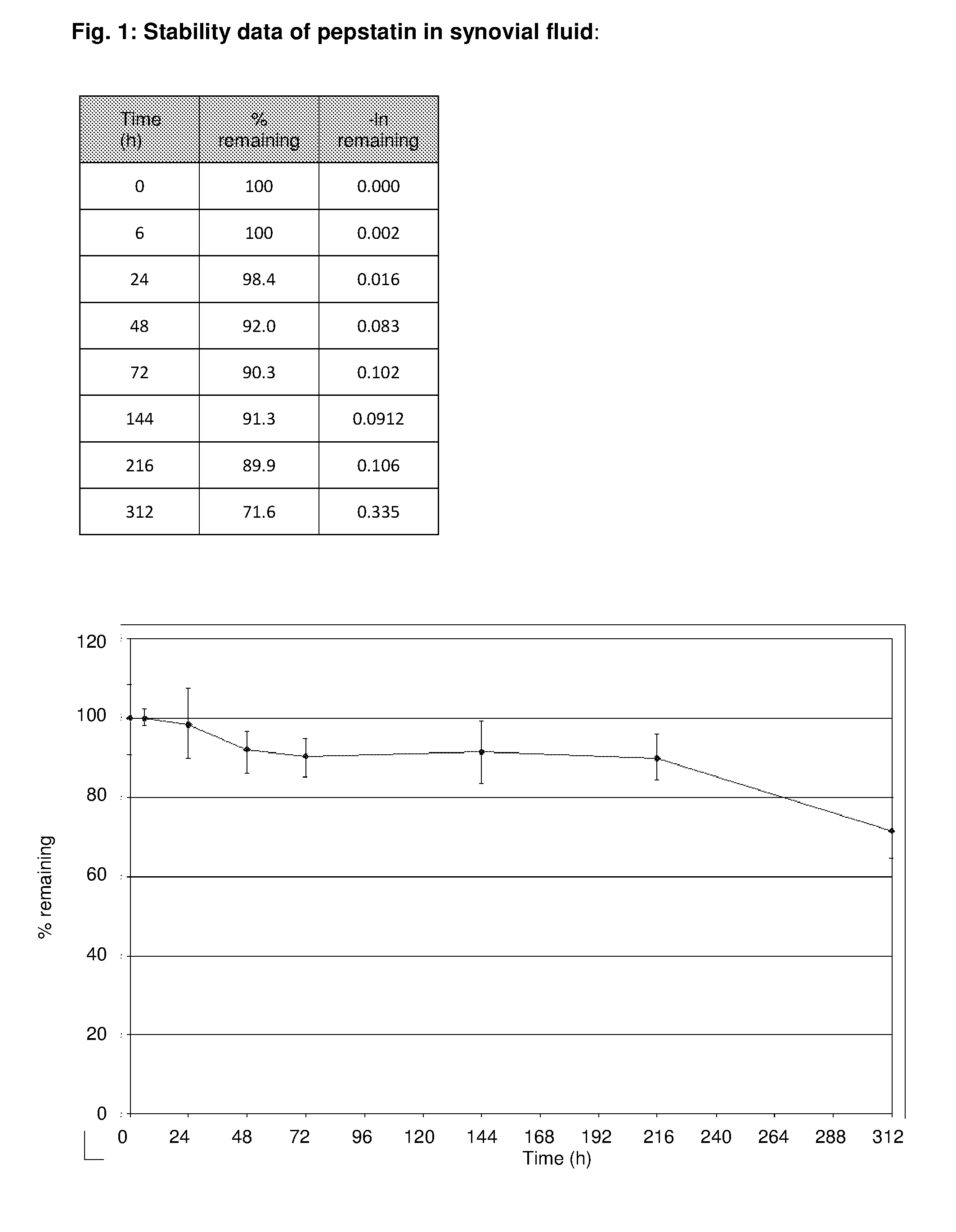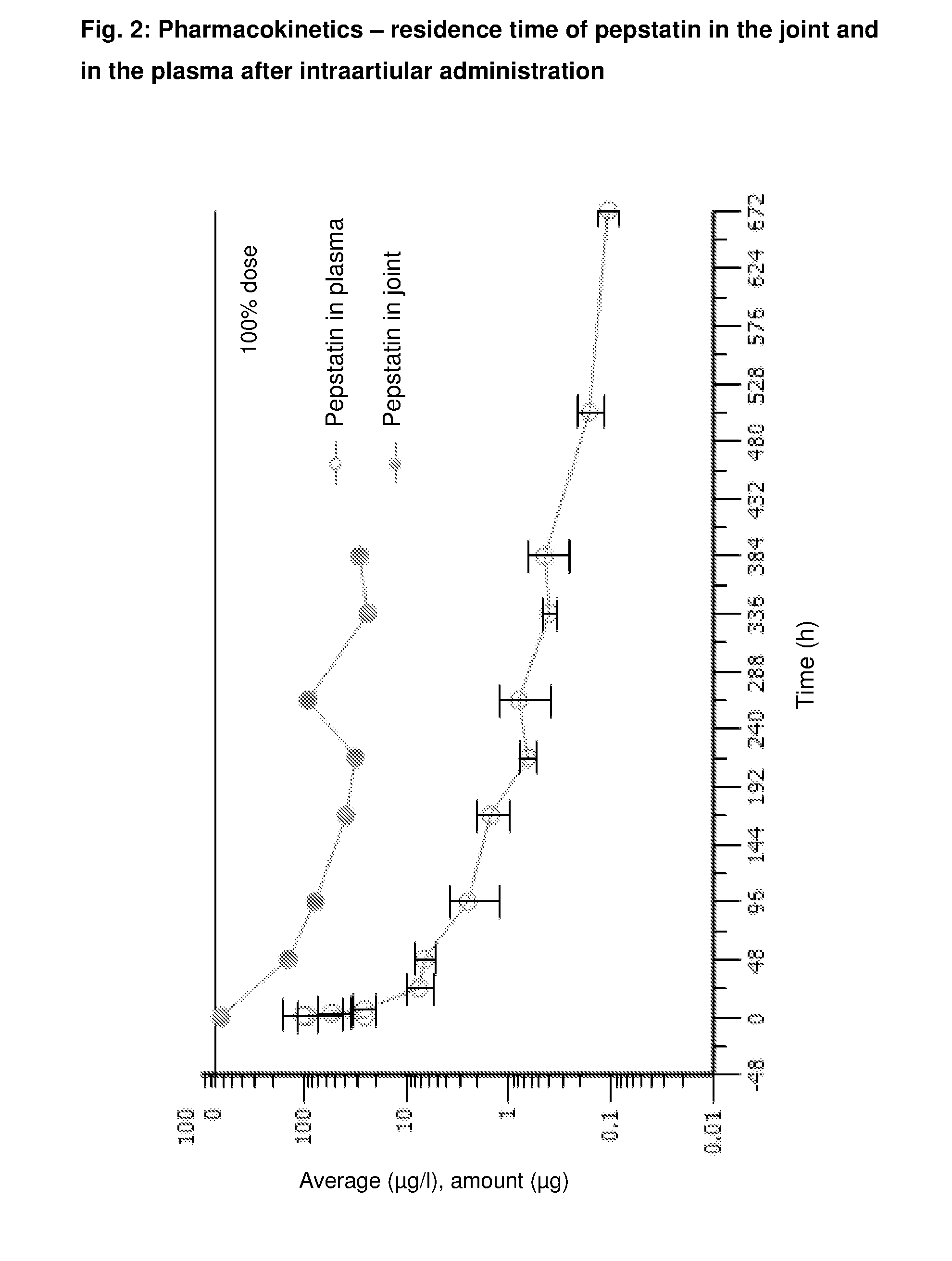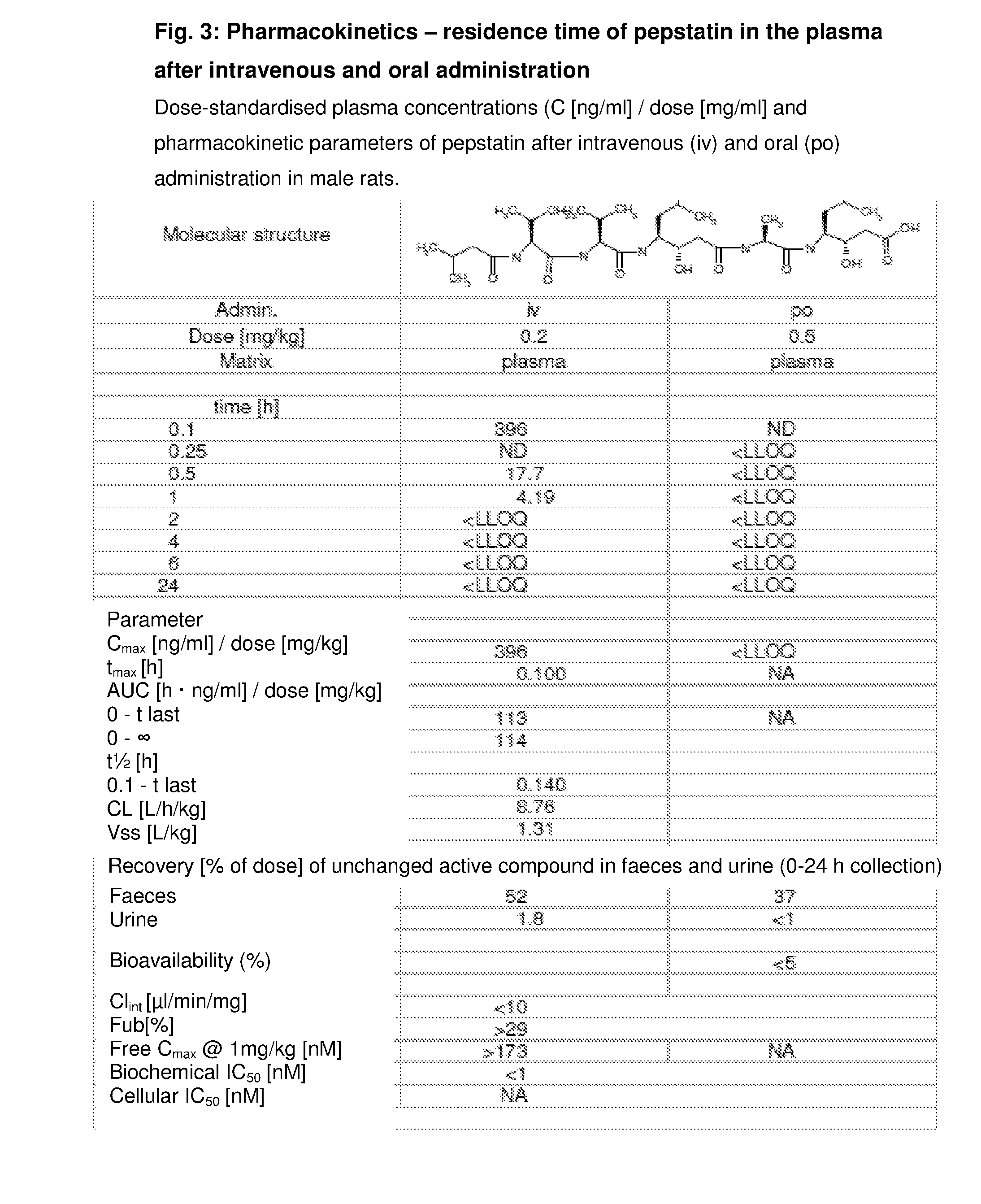Intraarticular application of pepstatin in the case of arthrosis
- Summary
- Abstract
- Description
- Claims
- Application Information
AI Technical Summary
Benefits of technology
Problems solved by technology
Method used
Image
Examples
example 2
In-Vitro Fluorescence Assay for Identification of Cathepsin D Inhibitors
[0114]In order to identify modulators of cathepsin D activity, a continuous enzymatic test was carried out with a synthetic peptide which carries a fluorescent group (MCA=(7-methoxycoumarin-4-yl)acetyl) which is quenched by energy transfer from a Dpn (2,4 dinitrophenyl) group on the same molecule, in Greiner 384-well nb microtitre plates. Cleavage of the peptidic substrate by cathepsin D causes an increase in the fluorescence intensity. In order to determine the efficacy of substances, the time-dependent increase in the fluorescence intensity in the presence of the substance was compared with the time-dependent increase in fluorescence in the absence of substances. The reference substance used was pepstatin A (Sigma-Aldrich). The substrate used was MCA-GKPILFFRLK(Dnp)d-R-NH2 (Enzo Life Sciences, Lörrach). The enzyme employed was cathepsin D isolated from the human liver (Sigma-Aldrich) in a final concentration o...
example 3
[0116]In order to investigate the effect of potential cathepsin D inhibitors on cartilage degradation, a pH-induced model based on bovine explants is used. The pH of the medium in which the explants are cultivated is matched here to the pathophysiological pH of an arthrotic knee. This pH is pH 5.5. In this ex vivo model, potential cathepsin D inhibitors are subsequently investigated for their action with respect to arresting the cartilage degradation process. If the cartilage is destroyed, glycosaminoglycans (GAGs) are released into the cell culture supernatant. The amount of GAGs released can be determined quantitatively with the aid of DMMB (dimethylmethylene blue hydrochloride). If sulfated GAGs are detected using dimethylmethylene blue hydrochloride, the decrease in the absorption at 633 nm is utilised. Since it is also possible to use very low GAG concentrations, a dye / GAG complex does not precipitate out even after extended incubation of DMMB with GAG, w...
example 4
Investigation of the Anti-Hyperalgesic Action in Animals
[0132]In order to induce an inflammation reaction, a carrageenan solution (CAR, 1%, 50 μl) was injected intraarticularly on one side into a rat knee joint. The uninjected side was used for control purposes. Six animals per group were used. The threshold was determined by means of a micrometer screw (medial-lateral on the knee joint), and the thermal hyperalgesia was determined by means of a directed infrared light source by the Hargreaves method (Hargreaves et al. 1988) on the sole of the foot. Since the site of inflammation (knee joint) is different from the site of measurement (sole of the paw), use is made here of the term secondary thermal hyperalgesia, the mechanisms of which is of importance for the discovery of effective analgesics.
[0133]Experimental description of thermal hyperalgesia (Hargreaves test): the experimental animal is placed in a plastic chamber on a quartz sheet. Before testing, the experimental animal is f...
PUM
| Property | Measurement | Unit |
|---|---|---|
| Ratio | aaaaa | aaaaa |
Abstract
Description
Claims
Application Information
 Login to View More
Login to View More - R&D Engineer
- R&D Manager
- IP Professional
- Industry Leading Data Capabilities
- Powerful AI technology
- Patent DNA Extraction
Browse by: Latest US Patents, China's latest patents, Technical Efficacy Thesaurus, Application Domain, Technology Topic, Popular Technical Reports.
© 2024 PatSnap. All rights reserved.Legal|Privacy policy|Modern Slavery Act Transparency Statement|Sitemap|About US| Contact US: help@patsnap.com










